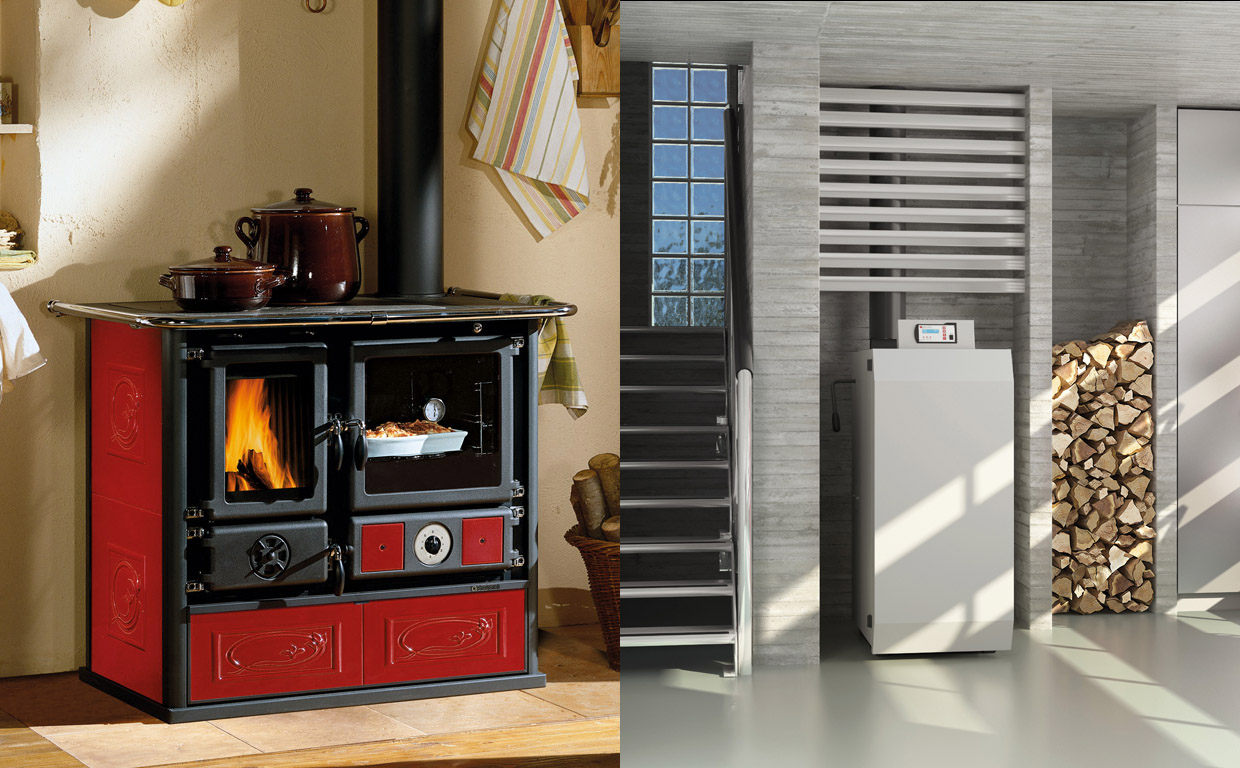Renewable Energy - Part 3 - Wood fuel

Image above courtesy of Camelot real fires.
- Wood fuel and Biomass
Wood is a traditional fuel, it's use, no doubt, as old as the history of mankind itself. It is still currently the main source of heating fuel in Scandinavian and some European countries, but is now also regaining popularity in the U.K., due to a growing concern over global warming and environmental issues.
- Why use wood fuel?
Wood is a renewable resource, its use as a fuel does not contribute to global CO2 emissions, provided that the rate of harvest equals, or is less than the rate of tree re-growth. If wood fuel is managed correctly, it can be both sustainable and eco friendly. When a tree is burned, CO2 is released into the atmosphere, conversely, when a tree is growing in the forest, CO2 is absorbed and combined with water to create sugars, during the chemical process known as photosynthesis. Oxygen is released into the atmosphere, as a by-product.
Calculations show that wood fuelled systems can break even with alternative systems in approximately six to nine years, at about half expected equipment life.
- How does wood burn?
The combustion of wood fuel is a developing technology, and it is not within the scope of this article to discuss the process of combustion. However, in order to evaluate the products on the market, it is useful to have some idea of the underlying processes at work. When wood is heated, it begins by giving off water vapour, and later, as the temperature rises, combustible gaseous products, including much creosote, are given off in a process known as pyrolysis. The wood itself slowly forms charcoal and may also combust if it is hot enough, and an adequate supply of air is able to reach it. The combustion of the gases produced by pyrolysis generates heat, which may in turn result in further decomposition of the wood, in a self sustaining process. The gases may move some distance from the log before sufficient mixing with oxygen is achieved, to allow burning to take place; the draw generated by the chimney may be instrumental to this effect. Concerns over providing sufficient oxygen to the gaseous products of pyrolysis have led to the inclusion of secondary air intakes on burners, with a view to providing a more efficient burn and reducing the release of emission and tar build up in flues. Although there is some dispute as to their effectiveness, particularly when the boiler is operated under partial load, as a supply of sufficient quantities of preheated secondary air, to ensure complete combustion, may be difficult to achieve.
- What are the disadvantages of using wood fuel?
Naturally, there are practical problems associated with storage and delivery of bulky fuel, and unlike fossil fuels, the release of heat cannot be switched on and off quickly, and still operate at high efficiency. There is a need to maintain a constant residual burn. If on-site preparation of wood fuel is carried out, there may also be safety concerns, with regard to cutting equipment and the storage of wood fuel, within the domestic environment.
While wood is accessible to nearly everyone, it is estimated that 4 to 8 tons of wood would be required per year, for a typical household, so adequate storage may not be possible for many people, and of course, not everyone is lucky enough to own their own forest, so purchasing supplies from a log merchant, with a contract for delivery is likely to be needed. It is important that supplies are sourced locally, if the fuel is to be economically viable, eco friendly and sustainable. Haulage of bulky wood fuel is of itself wasteful of resources, however, a proportion of supplies may come from pruning trees and hedges, if you have a sizable garden. All wood for burning should be allowed to season for at least a year, and be kept dry, so enclosed storage space is going to be needed.
Chimney flues need to be swept periodically, and ash from the fire disposed of, perhaps on the garden, as it is highly regarded as a fertilizer. Wood burning appliances can create pollution, if the fire is not hot enough, or the moisture content of the wood is too high. Under these circumstances, the burn will be incomplete and hence less efficient, creosote, carbon monoxide and other pollutants are produced, and deposits of creosote can build up in chimney flues, creating a fire hazard. Wood burners should not be used for the burning of household rubbish, as the burning process may release poisonous substances, such as heavy metals, into the atmosphere. As burner technology has increased efficiency, the lower temperature of exhaust gases, coming into contact with the cold walls of an unlined chimney, will result in the deposition of increased amounts of creosote. For this reason, it is generally recommended to have a thermally insulated flue installed in the chimney.
- What are the types of wood fuel burner?

Image above left courtesy of Stovax Gazco - Wood burning box stove.
Image above right courtesy of CERAMPIÙ SRL - Wood burning tiled stove.

Images above courtesy of La Nordica-Extraflame - Wood burning boiler and central heating range cooker shown left. Wood burning central heating boiler shown right.
Wood fuel burners can be broadly divided in groups, based on the types of wood fuel they consume. The types of wood fuel available are:
- 01 Wood logs
- 02 Re-constituted wood
- 03 Woodchip
Continued in our next blog post.
Add new comment